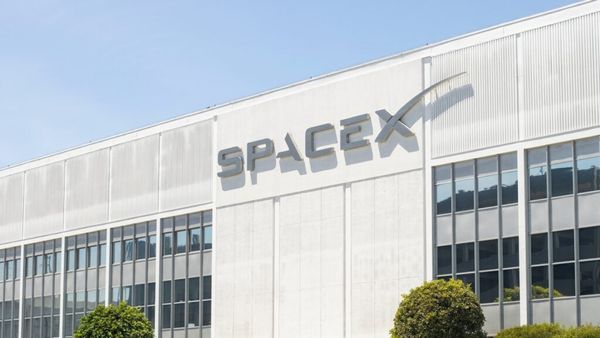
So you signed up for a loyalty card program in the hopes that you might earn points that somehow offset the cost of your exorbitant grocery bill. It seems like an easy (and free) way to get something back, a distraction from the daydream where you sell a kidney for a bunch of celery. Seems worthwhile, right?
Australian consumers were signed up to 98 million loyalty schemes in 2021, around 4.4 per person, the Australian Financial Review has reported. This includes supermarkets, airline frequent flyer programs, and other retailers like department and cosmetics stores. If the take-up of loyalty cards is any indication, consumers are convinced there are real benefits to being in the club.
Is it worth it?
The short answer is no. Loyalty programs are probably not worth it for the average consumer. And even when it seems like they are, they’re still not.
We’re increasingly understanding these programs to be efficient, effective and extremely lucrative data-mining machines. They not only encourage consumers to spend more, but also collect valuable consumer data with every purchase.
Every time you shop with a loyalty scheme, you’re not only handing over money, but intimate information about your movements, habits, needs and preferences. From this data, the business you trade with gets insights about you that allow them to be more strategic in how they appeal to you, as well as a constantly growing asset they can sell to other companies. And all they have to give you are the goods you already paid for. It’s simply not a like-for-like equation.
Chandni Gupta, digital policy director at the Consumer Policy Research Centre, says it’s often unclear what the rewards from loyalty programs even are, let alone whether these benefits are genuine. “Often the reality is that discounts and special offers are in exchange for you and your activities being tracked … Technology now enables tracking of consumers with far greater precision, at a volume and velocity like never before,” she says. This includes through the personal data you give over yourself, like your name and email address (first-party data), and incidental data that is collected about you as you use the scheme, for instance, your online search habits, clicks and location data (third-party data).
And you won’t always know what information is being collected about you, or even when or how it is collected. Unnervingly, loyalty program members’ data can be collected even if they don’t swipe a loyalty card at the point of sale. A report by Choice notes that programs like Flybuys and Everyday Rewards link payment data with loyalty programs, so consumers can be tracked through their credit or debit card.
If data collection doesn’t bother you, what’s the problem?
First, the companies running the loyalty programs are getting more out of the exchange than consumers. In its draft report on customer loyalty programs, the Australian Competition and Consumer Commission estimated that some programs generate between $110m and $370m in profits annually.
It’s very hard to tell how much money the data you give away as an individual is worth. There are some places that do put a price on data (for instance, Nielsen pays individuals $30 to monitor their NBN usage for one month, and $5 a month thereafter); but cumulatively (what you give plus what everyone else gives), it is worth billions. Market research firms regularly put the global value of the data brokerage industry at over US$200bn today, and that number is rising fast.
So if you manage to accumulate enough points for a free domestic flight to the value of around $200 once a year (which could cost you anywhere from 18,000 to 40,000 points, plus you still have to pay taxes and fees, and for the average person earning a full flight isn’t a likely outcome), you’re still lagging way behind the millions the business has earned from participants.
While a consumer spends money to earn points, the business running the loyalty program gets a powerful marketing tool, one that’s practically impossible to do business without these days, for free. So not only are they making money at the point of sale, they can potentially profit in perpetuity by selling consumer data later. The former ACCC chair Rod Sims noted that “selling insights and access to loyalty scheme members are becoming increasing sources of revenue” for retailers running the programs. Choice notes that some businesses don’t even need to on-sell data to profit, as they have their own data brokerage subsidiaries.
What is your data used for?
The reason this data is so valuable is because it is used to build consumer profiles –which are designed to both pre-empt and influence consumer behaviour. These profiles become more accurate – and more formidable – when they’re sold and combined with more datasets. Consumers have little insight into these machinations, and little ability to opt out.
At the benign end of the spectrum, consumers can expect this to result in targeted marketing. For instance, if there are groceries you purchase regularly, you’ll probably get alerts when they go on sale (handy); or if the data shows you like some chocolate and a bottle of wine on a Friday night, you might find yourself hit with Friday afternoon ads online reminding you of those vices, just when you’re at your most exhausted and suggestible (manipulative).
At the sinister end, it can result in economic redlining, excluding consumers from products and services and affecting their credit ratings, personalised price discrimination, and even the sale of databases to political parties. Choice found that the collection of data, coupled with the use of automated decision-making, “can create or reinforce existing biases, create inequalities in opportunities and lead to digital discrimination”.
Finally, it’s about power. Data is like currency, those that already have lots of it compound their gains the more they collect. This makes it harder for new market entrants, so incumbent businesses begin to form oligopolies (or in some cases, duopolies). Ultimately, this leads to less competition and worse outcomes for consumers, including higher costs and a lower bar for product offerings and customer service.
It also increases the power imbalance between big business and consumers, where businesses know more about consumers than consumers do about themselves.
Customers can’t be blamed for trying to catch a deal in an increasingly fraught economic climate. But they are overwhelmingly and perhaps purposefully left in the dark about what these “deals” are really worth, as big business continues to mine data for gain.
Kat George is a writer and public policy professional. Her work focuses on access and inclusion, consumer and human rights, regulation and new technology. She is a non-executive director at Choice and Hope Street Youth and Family Services, and all views expressed in her writing are her own.







